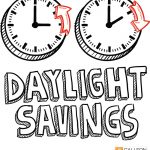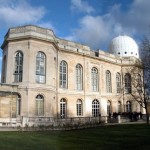From the early days of the industrial revolution, when railway lines and the telegraph spanned across time zones it became apparent that a global timescale was required that would allow the same time to be used no matter where you were in the world.
The first attempt at a global timescale was GMT – Greenwich Meantime. This was based on the Greenwich Meridian where the sun is directly above at 12 noon. GMT was chosen, primarily because of the influence of the British empire on the rest if the globe.
Other timescales had been developed such British Railway Time but GMT was the first time a truly global system of time was used throughout the world.
GMT remained as the global timescale through the first half of the twentieth century although people began referring to as UT (Universal Time).
However, when atomic clocks were developed in the middle of the twentieth century it soon became apparent that GMT was not accurate enough. A global timescale based on the time told by atomic clocks was desired to represent these new accurate chronometers.
International Atomic Time (TAI) was developed for this purpose but problems in using atomic clocks soon became apparent.
It was thought that the Earth’s revolution on its axis was an exact 24 hours. But thanks to atomic clocks it was discovered the Earth’s spin varies and since the 1970’s has been slowing. This slowing of the Earth’s rotation needed to be accounted for otherwise the discrepancies could build up and night would slowly drift in to day (albeit in many millennia).
Coordinated Universal Time was developed to counter this. Based on both TAI and GMT, UTC allows for the slowing of the Earth’s rotation by adding leap seconds every year or two (and sometimes twice a year).
UTC is now a truly global timescale and is adopted by nations and technologies across the globe. Computer networks are synchronised to UTC via network time servers and they use the protocol NTP to ensure accuracy.




